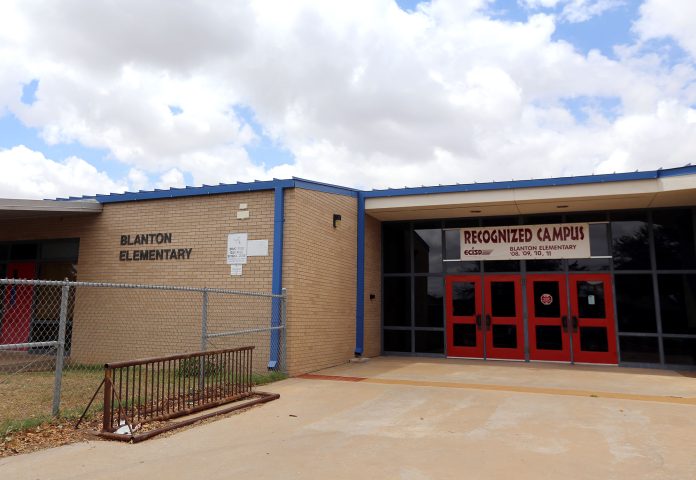
Having served at Blanton previously and returning as principal, Kamye Smith saw the potential for improvement in the campus.
This year, Blanton went from an F to a B and came within points of reaching an A, which is the next objective, Smith said.
A variety of factors went into the jump. Smith said it was a structured learning environment, a collaborative, diverse culture of learning and sustaining a high level of rigorous instruction in every classroom.
Smith said they have already identified the areas that need work and are shooting for an A next year.
Smith came to Blanton in late February 2021, and Assistant Principal Amanda Bizzell arrived in August 2021.
Blanton was rated a D under state accountability ratings in 2019, but dropped to an F in 2020. The campus is projected to have about 510 students in prekindergarten (4-year-olds) through fifth grade.
“When I was placed over here in February of 2021, I knew most of the teachers because in the ‘17-‘18, ‘18-‘19 school year, I was the assistant principal before I was moved to the principal over at Pease (Elementary) for a year and a half,” Smith said.
“I knew that the potential for Blanton was high. I knew that there were strong teachers and that it just needed a little more focus and the structure of the campus needed to be more student-centered. … That was the first thing that we did is to create a structured learning environment. … We just aligned it to what the standards were and laid those foundational skills and those expectations. Through data-driven instruction (and) meeting with teachers, they met their plan,” Smith said.
Some teachers were moved around, but she knew things were poised to get better.
Last year, prekindergarten and kindergarten really played a role in laying those foundational goals, Bizzell said.
Smith said they wanted to lay strong foundational skills for when the younger students got to the upper elementary grades.
They targeted students that were struggling to fill in the gaps, but they also extended that learning to the students who were doing well.
“We had our work cut out for us because there was a large varying degree … of skills within … each grade level,” Smith said.
Bizzell said they looked at every student’s potential.
“We met with students on this campus, even having over 500 students, we looked at every student and their potential and how they could be grown; how they needed to grow,” Bizzell said.
Teachers met with students, and administrators met with teachers.
“We went over the data to where we specifically knew the students as far as (their) overall needs as a learner,” Smith said.
She added that they have not had a chance to compare notes with other campuses about their successes to see if it worked the same way.
Smith said they made sure the curriculum was solid and rigorous through the framework, which is the curriculum broken down and how the teachers deliver it.
There are different skills and needs at each campus, and you just have to find out what they are and strategically work to meet them, Smith said. She added that more than half of their students are new to them this year.
Smith said they have identified master teachers as teacher leaders.
“We’ve made them part of an advisory board with the leadership team,” Bizzell said.
Bizzell said they are kind of like a middleman, going between administration and other teachers.
“But they can go in and support those teachers in a non-evaluative way,” Bizzell said.



